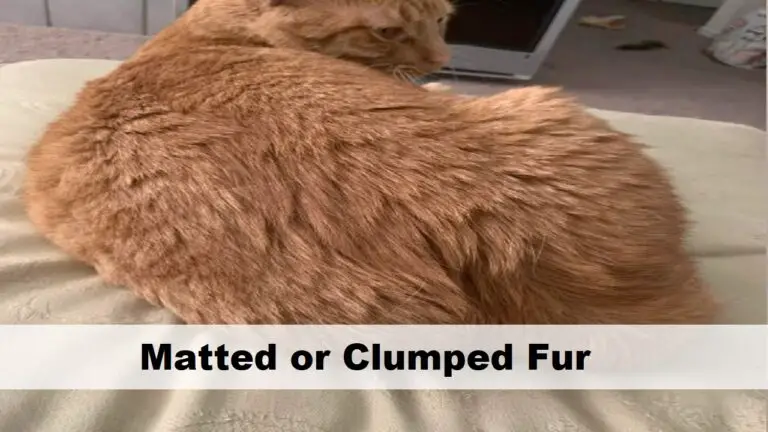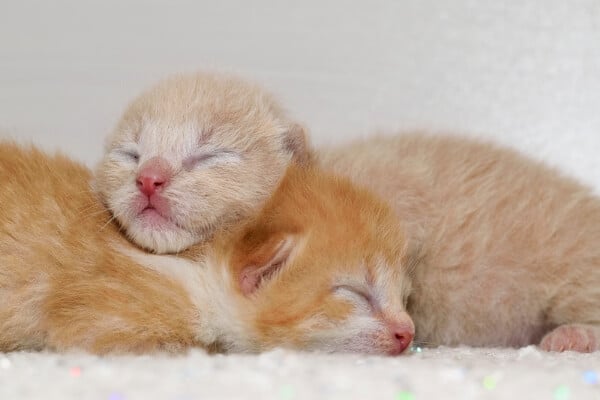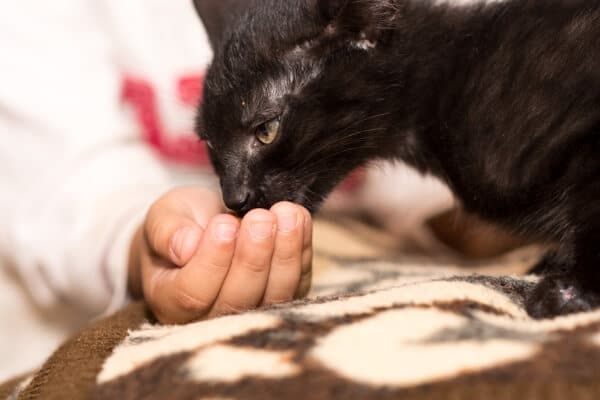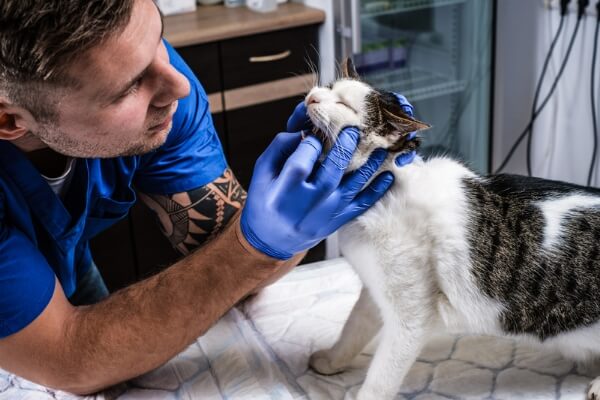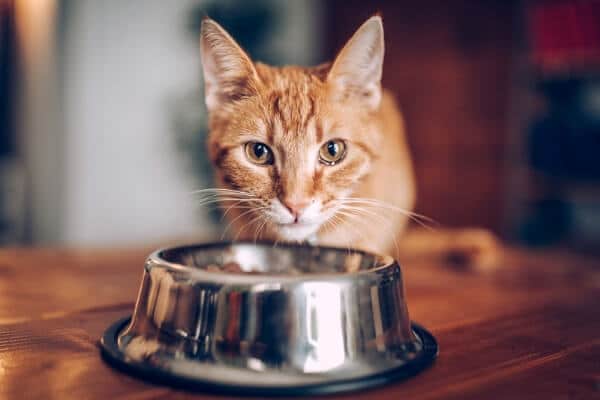Why Did My Cat Die With His Eyes Open? Is It Normal?

The loss of a beloved feline companion can be a devastating experience, leaving pet owners with questions that linger long after their furry friend’s passing. Things that come across as petty such as the sight of your cat dead with eyes open may heighten your grief.
It is absolutely normal for cats to die with their eyes open. Generally, closing or opening the eyes requires active muscular effort, which ceases to exist once a cat has passed away. In the absence of these vital functions after death, the eyelids go back to their natural position which may be a slightly open position in some cats. This is more common in cats that were euthanized, particularly because of anesthesia administered in the process.
It is important to note that the occurrence of a cat passing away with its eyes open does not indicate that your feline friend went through pain in its final moments. The phenomenon is purely a result of physiological changes postmortem.
Understanding this can bring solace to grieving pet owners who may be troubled by the image of their feline companion in this state.
Read Also: How Long Does It Take For A Dead Cat To Start Smelling?
Anatomy Of The Cat’s Eyelids
Cats’ eyelids have skin and fur on the outside, but they don’t have any noticeable eyelashes. The inner part of the eyelid is lined with a delicate tissue known as the palpebral conjunctiva.
Along the edge of the eyelids are tiny openings. These are the outlets for what we call the tarsal (or Meibomian) glands. These glands are crucial in helping to keep a cat’s eyes lubricated. Near the inner corner of the eye, each eyelid also has a tear duct known as the lacrimal puncta, which is an opening into the nasolacrimal drainage system, responsible for draining tears away.
The two main muscles in the eyelid are the orbicularis oculi and levator palpebrae superioris.
The orbicularis oculi muscle is a thin layer in each eyelid that starts from the face’s muscles and runs along the edge of the eyelid, meeting at the corners of the eyes. This muscle is controlled by a nerve called the auriculopalpebral nerve. Its job is to close cats’ eyelids when they blink or sleep.
On the other hand, the levator palpebrae superioris muscle begins deep within the eye socket and extends up to the upper eyelid. This muscle allows cats to lift their upper eyelids, helping them to open their eyes. It’s controlled by a different nerve called the oculomotor nerve. If this nerve is damaged, it can result in a condition called ptosis, where the upper eyelid droops.
Also, we have the frontalis and the retractor anguli oculi lateralis muscles. The frontalis starts near the middle of the cat’s forehead, wraps around the sides of the head, and attaches to the upper eyelid. This muscle, also controlled by the facial nerve, helps raise the cat’s upper eyelid.
The retractor anguli oculi lateralis muscle starts from the frontalis muscle and narrows into a band at the outer corner of the eye, where it meets with the orbicularis oculi. This muscle helps pull the outer corner of the cat’s eye backward, giving cats their unique eye shape.
Is It Normal For Cats To Die With Their Eyes Open?
Do not be worried. It is very common for cats to die with their eyes open. When a cat passes away, the muscles in their body, including those that control the eyelids, relax. As a result, the cat’s eyes may remain open after death.
The reason for this occurrence lies in the cat’s physiology. Cats have a specialized muscle called the “levator palpebrae superioris” that is responsible for raising the upper eyelid. This muscle is under constant tension while the cat is alive, keeping the eyes closed when the cat is at rest or sleeping. However, once the cat dies, the tension in this muscle is released, causing the eyelids to fall open.
It is important to note that the appearance of the cat’s eyes after death can vary depending on the circumstances. Factors such as the position of the cat’s body, the level of muscle relaxation, and the time that has passed since death can influence the degree to which the eyes remain open.
Why Did My Cat Die With His Eyes Open?
When a cat dies with its eyes open(bilateral ptosis), there can be several reasons for this phenomenon. Here are some common reasons:
1. Euthanasia
Euthanasia is a humane and controlled way to end a pet’s life when they are suffering. During this process, your vet will administer a high dose of an anesthetic drug, usually a barbiturate, that causes the animal to lose consciousness and then stop the heart. This drug also relaxes the muscles in the body, including those that control the eyelids. As a result, it’s quite common for a pet’s eyes to remain open after euthanasia.
It can be disconcerting to witness, but it’s important to remember that it doesn’t mean the animal experienced any pain or distress. Instead, it’s a natural side effect of the muscle relaxation caused by the anesthesia.
2. Muscle relaxation
The process that you are referring to is known as “primary flaccidity,” which is the first stage of rigor mortis that occurs shortly after death in mammals.
Upon death, all the muscles in the body relax, a state known as post-mortem muscle relaxation. This occurs because, after death, the body can no longer produce ATP (adenosine triphosphate), a molecule responsible for providing the energy necessary for muscle contraction.
So, when a cat dies, the muscles responsible for keeping the eyes closed—namely, the orbicularis oculi—also relax. Since the levator palpebrae superioris (the muscle that opens the eyelids) and the orbicularis oculi (the muscle that closes the eyelids) can no longer maintain a balance of tension and relaxation, the eyelids may naturally fall open due to the elasticity of the eye tissues and gravity.
The specific appearance of the cat’s eyes after death can vary based on individual circumstances, the position of the body, and other factors. However, this basic principle of post-mortem muscle relaxation explains why a cat’s (or any animal’s) eyes might appear open after death.
3. Fear
Fear is an emotional response to threats or danger, and it can also cause a cat’s eyes to remain open at death. When a cat perceives a threat, its body’s fight-or-flight response is triggered, causing the pupils to dilate for a better view of the surroundings.
If a cat dies in a state of fear, its eyes could remain open due to this adrenaline-driven response. This does not necessarily mean that your cat died in a state of fear, however. It’s important not to jump to conclusions, as it could just be natural muscle relaxation.
4. Neurological disorders
While neurological disorders observed in humans have been linked to the inability to close the eyes, this is not as well-documented in cats.
This can affect a cat’s control over its bodily functions, including the ability to close its eyes. Certain conditions can interfere with the neural pathways that control eyelid movement, which can lead to the cat’s eyes remaining open at death. More research is needed to confirm if neurological disorders can lead to bilateral ptosis (drooping or falling of the upper or lower eyelid) at death in cats. Nonetheless, if your cat had a known neurological condition, this could have potentially contributed to its eyes remaining open at death.
It’s necessary to keep in mind that the exact reason for your cat’s eyes being open can be difficult to determine without a proper veterinary examination. If you have concerns or questions about your cat’s passing, it’s best to consult with a veterinarian who can provide more specific information based on the circumstances surrounding your cat’s death.
Can I Close The Eyes Of My Deceased Cat?
Closing the eyes of a deceased cat is a personal choice that many pet owners make as part of the grieving and funeral process. When a cat passes away, their eyes usually remain open due to a natural muscle relaxation that occurs after death. Closing the eyes is primarily done for aesthetic reasons and to provide a sense of peace and dignity to the deceased pet.
Here are a few things to keep in mind if you are considering closing the eyes of your deceased cat:
1. Timing
It’s best to wait until the cat’s body has completely relaxed after death before attempting to close the eyes. This typically occurs within a few hours after passing away.
2. Gentle Approach
Closing the eyes should be done with care and gentleness. Gently press down on the eyelids using your fingers or a soft cloth. Be cautious not to apply too much pressure or force, as the eyelids and surrounding area may be sensitive.
3. Seek Assistance If Needed
If you feel uncomfortable or emotionally overwhelmed by the process, it’s perfectly acceptable to ask for assistance from a veterinarian or a trusted individual who has experience with pet care.
It’s worth noting that closing the eyes of a deceased cat is not mandatory or necessary. Some people prefer to remember their pets as they were and choose not to intervene in any way. Grief and mourning are highly personal experiences, and different cultural and religious beliefs may also influence individual choices regarding the handling of deceased pets. Remember to take the time you need to process your emotions and say goodbye to your beloved pet in a way that feels right for you.
Does Dying With Eyes Wide Open Mean My Cat Suffered Before Dying?
When a cat dies with its eyes open, it’s important to understand that this is a natural occurrence and doesn’t necessarily indicate suffering before death. The state of a cat’s eyes at the time of death can vary depending on several factors, including the cause of death and the stage of the dying process.
It’s difficult to determine whether or not a cat experienced suffering before dying based solely on the position of its eyes. Cats, like any living beings, may experience discomfort or pain as they near the end of their lives, but it’s important to remember that the dying process can vary from animal to animal. Some cats may pass peacefully and without apparent distress, while others may exhibit signs of discomfort.
If you have concerns about your cat’s well-being before its passing, it’s recommended to reflect on its overall condition and behavior leading up to that point. If you noticed any significant changes in appetite, mobility, or behavior, it could be worth discussing them with a veterinarian who can provide further insight. Losing a beloved pet can be a difficult and emotional experience, so it may be helpful to seek support from friends, family, or even professional resources such as grief counselors or pet loss support groups
What Happens To A Cat After Death?
When a cat passes away, its body goes through several stages of postmortem changes, starting from the cessation of vital functions to the eventual decomposition of the body. These changes occur in a predictable sequence, though the timing can vary based on environmental conditions and the cat’s physical attributes.
After death, pallor mortis sets in shortly making the cat’s body lose its color due to ceased blood circulation. This stage usually starts within the first 15 to 20 minutes post-death. The cat’s body then begins to cool down in a stage called algor mortis. This happens because the metabolic processes have stopped, causing the body to no longer produce heat.
Following this, rigor mortis causes temporary stiffening of the muscles due to a halt in ATP production, starting within 2-6 hours after death and lasting for about 12-48 hours. Before the end of rigor mortis autolysis will have taken place. Autolysis is the stage when the cat’s body cells start self-digesting, which marks the onset of decomposition. It often begins within a few hours to a day after the cat’s death.
Autolysis is succeeded by putrefaction, wherein the body’s bacteria break down tissues and cells. This causes the body to bloat and emit a foul smell, with the onset usually occurring a few days after death.
Finally, decomposition begins and the cat’s soft tissues break down completely, often with the assistance of insects. This process could take weeks to months, resulting in the body being reduced to skeletal remains.
What To Do With The Body Of A Dead Cat?
Dealing with the body of a deceased pet can be a difficult and emotional experience. It’s important to handle the situation with care and respect. Here are a few options you can consider:
1. Burial
Many people choose to bury their deceased pets in a designated pet cemetery or on their property if local regulations permit. You can dig a hole deep enough to prevent scavengers from disturbing the remains and place the body in a biodegradable container or wrap it in a cloth. Make sure to cover the grave with soil and mark the location if desired.
2. Cremation
A cremation is a popular option for pet owners. You can contact a local pet crematorium or your veterinarian to inquire about their services. They will handle the cremation process and return the ashes to you if requested. Some crematories offer communal or private cremation options, with private cremation ensuring you receive only your pet’s ashes.
3. Pet Cemetery Or Memorial Garden
If you prefer not to bury your cat at home, you can consider a pet cemetery or memorial garden. These dedicated spaces provide a final resting place for pets, and some even offer memorial services and markers.
4. Contact A Veterinarian
If you’re unsure about what to do or need guidance, reach out to your veterinarian. They can provide advice and assistance on handling the body or may have recommendations for local pet burial or cremation services.
Remember to check your local regulations regarding pet burials or cremations, as there may be specific guidelines or restrictions in your area. It’s important to approach this situation in a way that brings you closure and respects the memory of your beloved cat.
How Long Does It Take For A Dead Cat To Start Smelling?
Where Do Cats Go After Death?
Different religions and spiritual beliefs offer various interpretations of what happens after death. Here are a few examples:
Reincarnation: Some belief systems, such as certain branches of Hinduism and Buddhism, suggest the concept of reincarnation. According to these beliefs, the cat’s soul may continue its journey by being reborn in a new body, possibly as another animal or even as a human.
Afterlife: Many religious traditions, including certain forms of Christianity and Islam, propose the existence of an afterlife. The specific nature of the afterlife can differ among these beliefs. Some envision a heavenly realm where the cat’s soul might experience eternal bliss, while others describe a purgatory or hellish realm for punishment or purification.
Spiritual energy: Certain spiritual beliefs suggest that there is an underlying energy or life force that transcends physical existence. From this perspective, when a cat dies, its energy or soul may disperse and return to the collective energy of the universe or merge with a higher consciousness.
Why Did My Cat Die With Tongue Out?
Excluding relaxation of muscles, respiratory distress causes a cat’s tongue to hang out at death. Difficulty in breathing, also known as dyspnea, can lead cats to open their mouths and extend their tongues in an attempt to get more oxygen. This behavior is a common response across many species when dealing with respiratory problems. If your cat was suffering from a condition that caused respiratory distress, such as heart disease or a lung condition, it may have been trying to take in more air, leading to its tongue sticking out at the time of passing.
Also, certain neurological disorders or a stroke might lead to a cat’s tongue sticking out at death. These health issues can disrupt the normal functioning of nerves and muscles, leading to abnormal postures or behaviors. If your cat had a sudden, severe neurological event like a stroke, its tongue might have remained out due to a loss of normal muscular control. However, it’s important to remember that this is just one possible explanation, and a vet would be the best person to consult for a more accurate understanding of your pet’s specific situation.
Final Thoughts
Cats possess a remarkable ability to regulate their body functions, even in the face of impending death. Unlike humans and some other animals, feline muscles do not involuntarily relax upon passing away. Instead, the muscles responsible for keeping the eyes closed require an active contraction to close the eyelids fully. When a cat dies, these muscles gradually lose their functionality, leading to the cat’s eyes remaining open. While this occurrence may initially alarm grieving owners, it is a natural consequence of the body’s physiological processes.
It is essential to remember that the appearance of a cat’s eyes after death does not reflect the quality of life it experienced nor the love it received during its time with its human family. Instead, it serves as a poignant reminder of the uniqueness and delicate balance of life.
As grieving pet owners, we must cherish the memories and moments we shared with our beloved companions, knowing that their open eyes are a testament to the resilience and strength inherent in every living being. Let us find solace in the fact that, even in death, our cats continue to inspire us with their extraordinary nature, forever imprinted in our hearts.
Read related posts about

